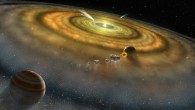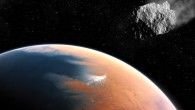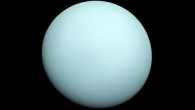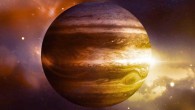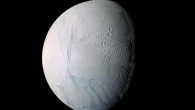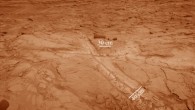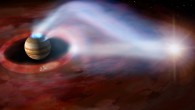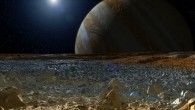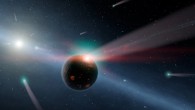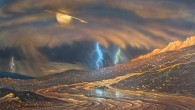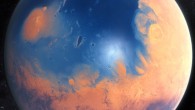Ancient volcanic deposits distributed across the surface of the Moon contain unexpectedly high amounts of water compared with surrounding terrains, according to an analysis of data from the Moon Mineralogy Mapper instrument onboard India’s Chandrayaan-1 lunar orbiter. This finding bolsters the hypothesis that the lunar mantle is surprisingly water-rich. Map of ESPAT (effective single particle absorption thickness) values and associated water contents...



